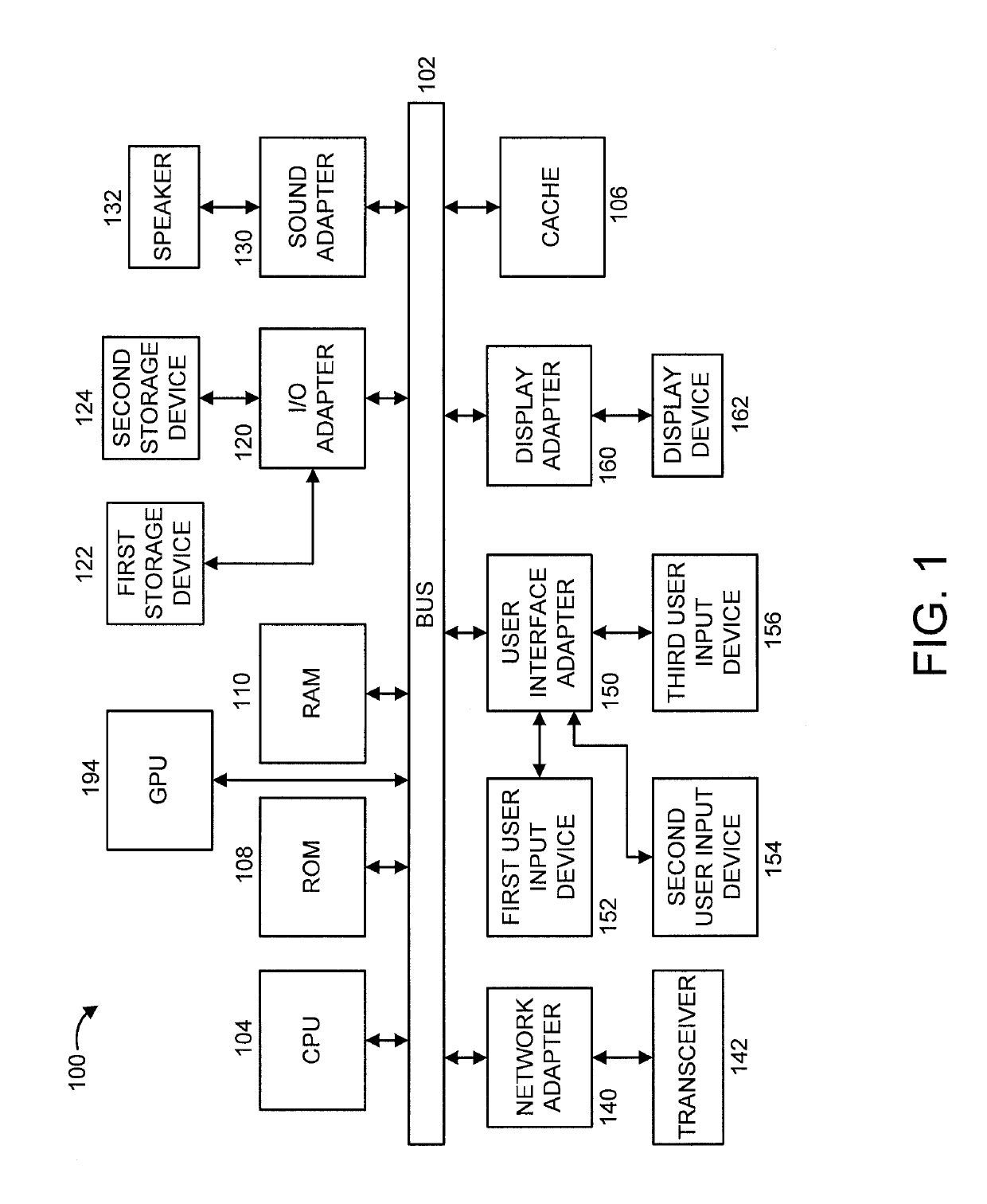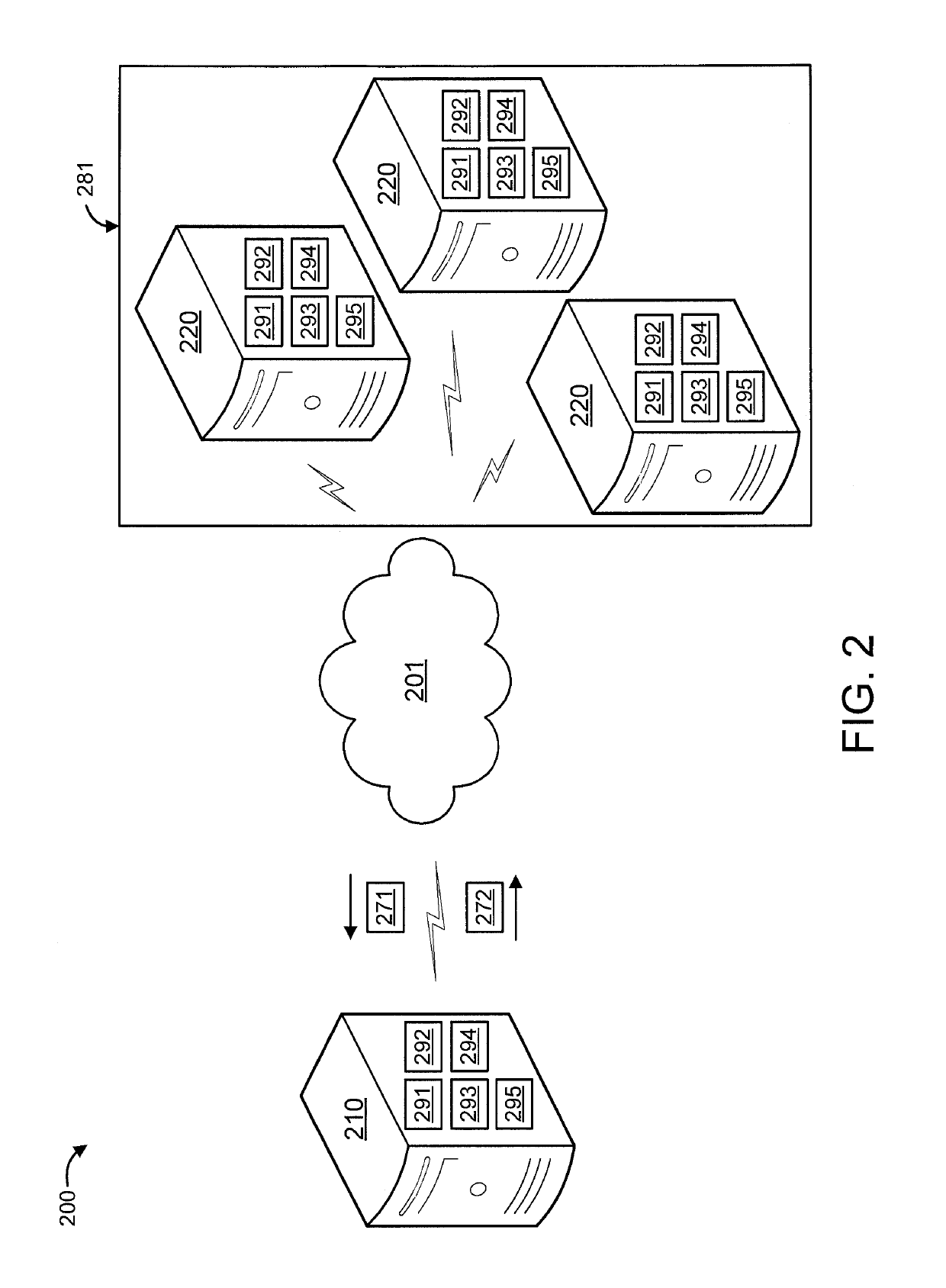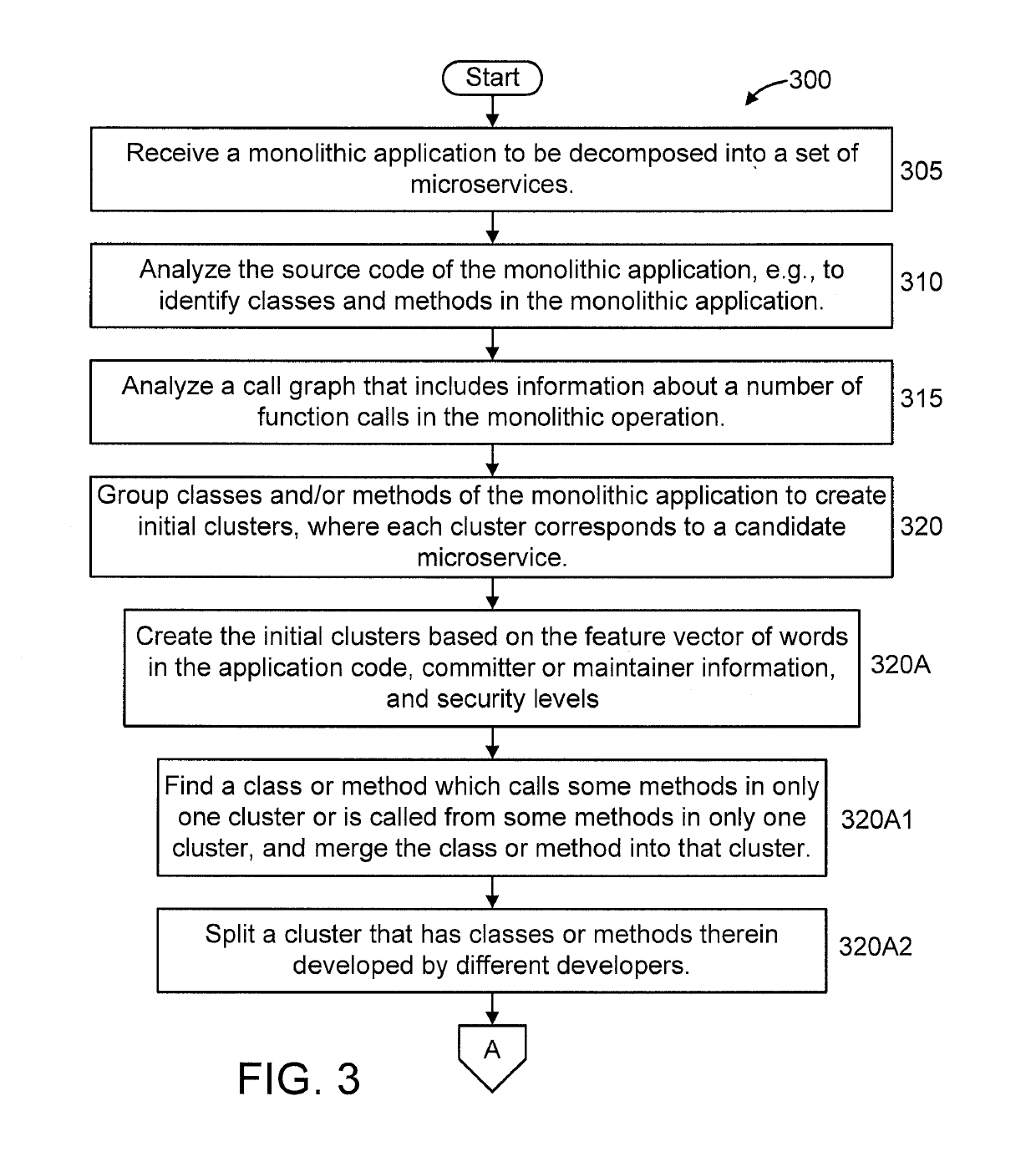Decomposing monolithic application into microservices
a monolithic application and microservice technology, applied in the field of information processing, can solve the problems of unnecessarily decomposing a function into microservices and affecting and achieve the effect of reducing the overall performance of the application and reducing the complexity of the application
- Summary
- Abstract
- Description
- Claims
- Application Information
AI Technical Summary
Benefits of technology
Problems solved by technology
Method used
Image
Examples
Embodiment Construction
[0022]The present invention is directed to transforming and / or otherwise decomposing a monolithic application into microservices. Accordingly, the terms “transform” and “decompose” and forms thereof are used interchangeably herein to refer to a technique for obtaining, from a monolithic operation, a set of microservices that essentially form and / or are otherwise involved in the monolithic operation.
[0023]FIG. 1 shows an exemplary processing system 100 to which the invention principles may be applied, in accordance with an embodiment of the present invention. The processing system 100 includes at least one processor (CPU) 104 operatively coupled to other components via a system bus 102. A cache 106, a Read Only Memory (ROM) 108, a Random Access Memory (RAM) 110, an input / output (I / O) adapter 120, a sound adapter 130, a network adapter 140, a user interface adapter 150, and a display adapter 160, are operatively coupled to the system bus 102. At least one Graphics Processing Unit (GPU...
PUM
 Login to View More
Login to View More Abstract
Description
Claims
Application Information
 Login to View More
Login to View More - R&D
- Intellectual Property
- Life Sciences
- Materials
- Tech Scout
- Unparalleled Data Quality
- Higher Quality Content
- 60% Fewer Hallucinations
Browse by: Latest US Patents, China's latest patents, Technical Efficacy Thesaurus, Application Domain, Technology Topic, Popular Technical Reports.
© 2025 PatSnap. All rights reserved.Legal|Privacy policy|Modern Slavery Act Transparency Statement|Sitemap|About US| Contact US: help@patsnap.com



